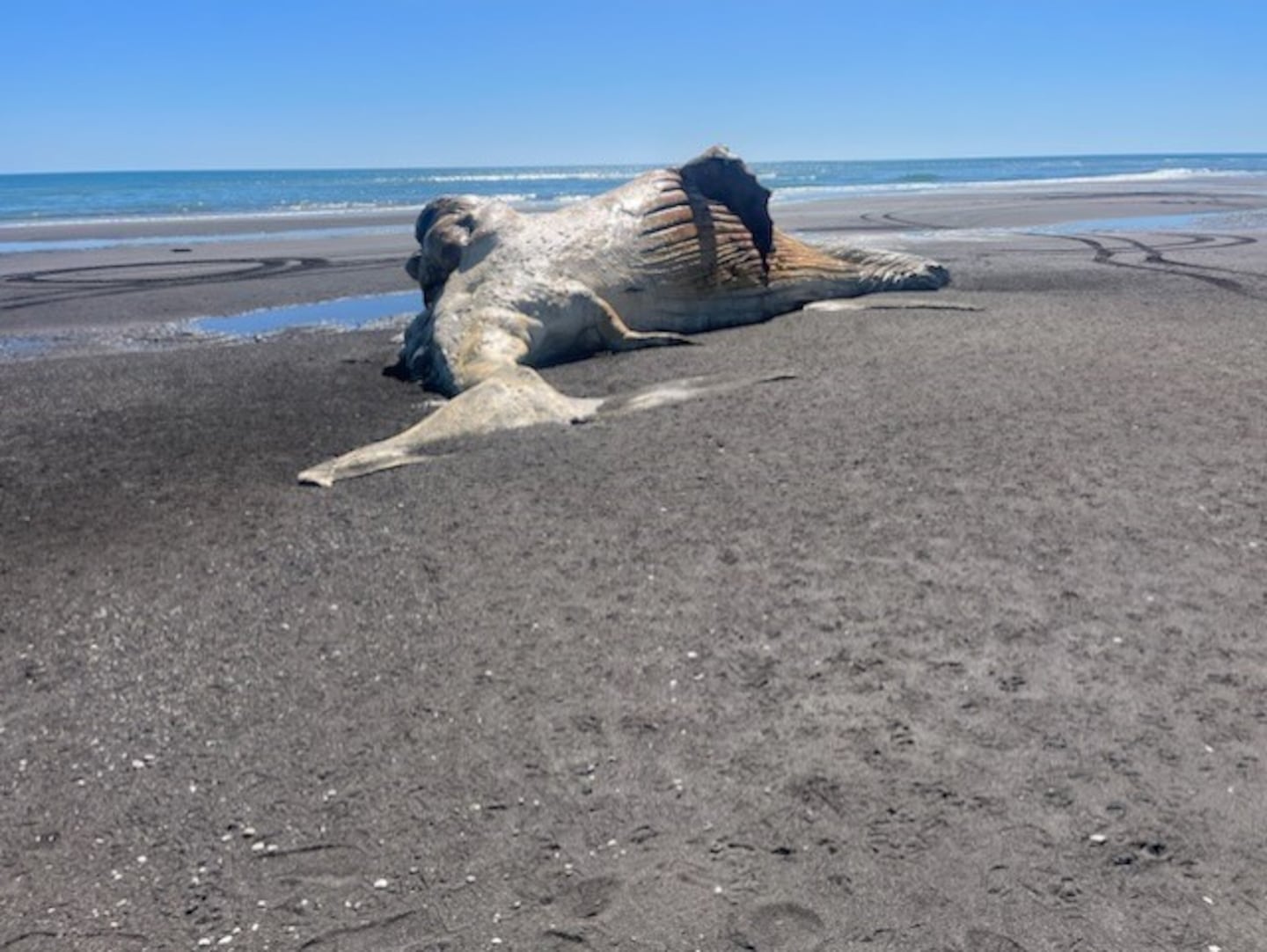A male humpback whale was discovered stranded on the West Coast of the lower North Island, in the Rangitikei district during the weekend. It was discovered by DoC and the local iwi authorities were notified.
This is the second stranding within the district that the iwi of Ngā Wairiki, Ngāti Apa has had to process in the past three months. Ngā Wairiki, Ngāti Apa iwi liaison Jasmine Sampson says despite the sorrow that comes with losing such a precious gift of the sea, much knowledge has been gained that has helped to revitalise knowledge that once was lost but is now being revived.
The male humpback was 12 metres long and weighed about 36 tonnes. A crisis of such magnitude was enough to rally whānau, hapu, and iwi together to share in the learning of revived customs that this crisis has provided.
“I think if we go back to the name that was given to the first tohora that stranded, it was Te Piringa Whatioro, and it’s about our people coming back together, our people coming back home, and just the environment that was provided by that tohora for our people to come together and relearn all of these mātauranga was amazing,” Sampson says.
“We had Ngāti Wai come down from up north to guide us in that process in terms of the hauhake tohora (cutting up) process, what that looks like, the rendering, what different resources you can create out of it, and then the burial process.”
“So going into the second stranding, we were able to say ‘this is what we’re going to do, this is the process we’re going to follow,’ and we were able to go into it with some sort of confidence, knowing what we were about to embark on,” Sampson says.
It is still not known how long the whale had been stranded but it was determined it had died at least two weeks ago. Due to the state of deterioration to its body, and the length of time since its death, the iwi decided to bury it.

“The difference between this whale and the first whale that stranded a couple of months ago is that we’re not going to be doing any of the hauhake (cutting) process in terms of cutting it up and all that sort of stuff and trying to render any oils or anything like that. That’s not going to happen just due to the condition that it’s in and how long it’s been passed away for. So, we’re going to bury him whole and just lay him to rest so that he can rest. It looks like he’s been on quite a journey,” Sampson says.
Taranaki and Whanganui elder Rauru Broughton says in the times of the old people the stranding of a whale was considered a more joyful occasion.
“It is noted and seen as a koha from Tangaroa and Maru. Maru is an atua from our region of South Taranaki, so it’s Tangaroa, and Maru, gifting the tohora to Te Ao Tangata.”
In 2006 in the South Taranaki area of Waitotara there was a stranding and many of the iwi members did not know the traditions and customs for a whale stranding. Fortunately, some of the iwi’s elders were still alive at that time and came from fishing families, and they had a very strong knowledge of the stranding process, so they guided iwi through that custom.
“Of the tohora itself, a lot of the tohora at this stage has been turned into weapons such as wahaika, patu and so forth, and according to our mātua that’s the connection of Tangaroa, Maru and Tū Matauenga or Tū Kāriri and Rongo, so other atua energise the process as time goes on,” Broughton says.
“So yeah, a lot of sadness, but a lot of good things have come out of it too in terms of revitalising that mātauranga within our hapū and within our iwi”, Sampson says.
The burial ceremony for the whale is this afternoon.



